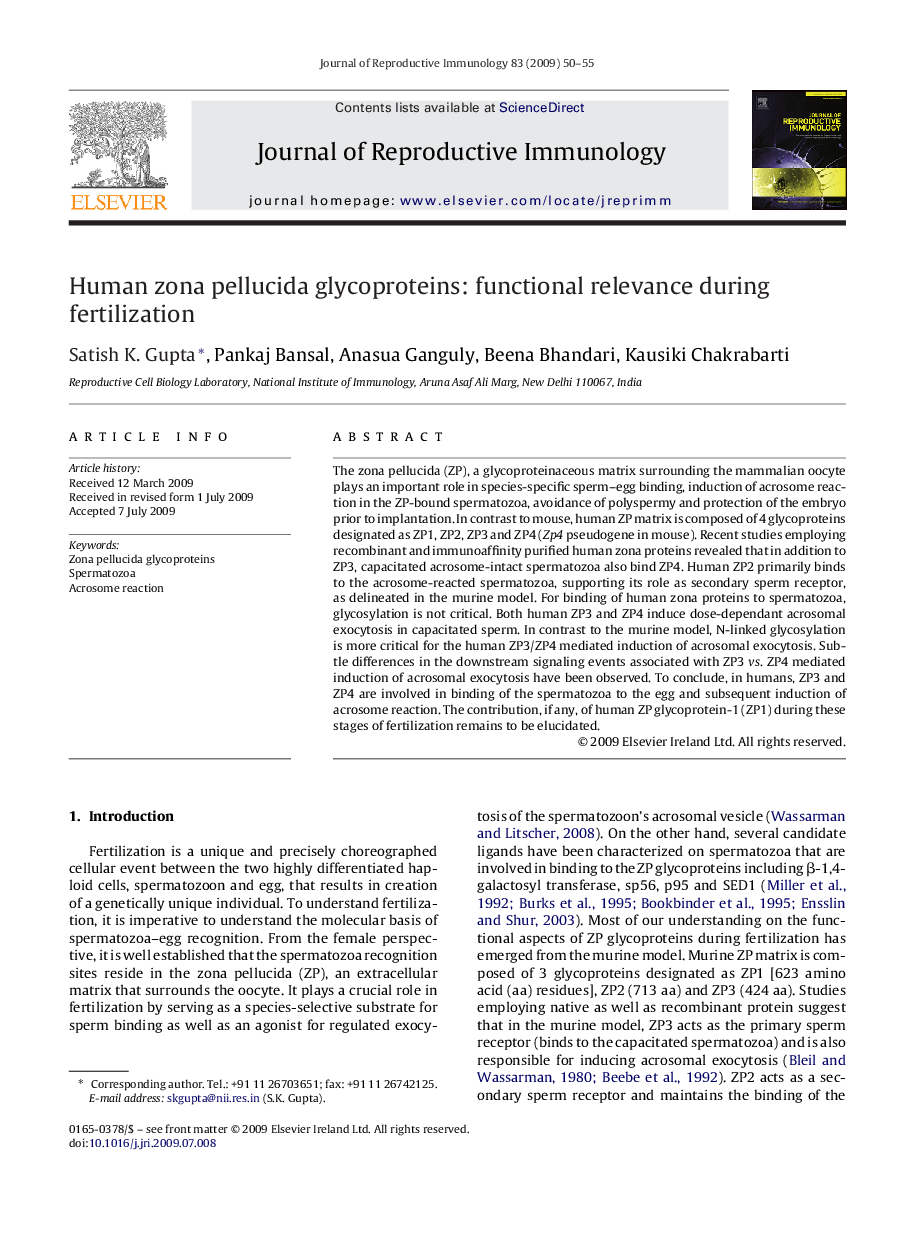| کد مقاله | کد نشریه | سال انتشار | مقاله انگلیسی | نسخه تمام متن |
|---|---|---|---|---|
| 3961613 | 1600719 | 2009 | 6 صفحه PDF | دانلود رایگان |

The zona pellucida (ZP), a glycoproteinaceous matrix surrounding the mammalian oocyte plays an important role in species-specific sperm–egg binding, induction of acrosome reaction in the ZP-bound spermatozoa, avoidance of polyspermy and protection of the embryo prior to implantation. In contrast to mouse, human ZP matrix is composed of 4 glycoproteins designated as ZP1, ZP2, ZP3 and ZP4 (Zp4 pseudogene in mouse). Recent studies employing recombinant and immunoaffinity purified human zona proteins revealed that in addition to ZP3, capacitated acrosome-intact spermatozoa also bind ZP4. Human ZP2 primarily binds to the acrosome-reacted spermatozoa, supporting its role as secondary sperm receptor, as delineated in the murine model. For binding of human zona proteins to spermatozoa, glycosylation is not critical. Both human ZP3 and ZP4 induce dose-dependant acrosomal exocytosis in capacitated sperm. In contrast to the murine model, N-linked glycosylation is more critical for the human ZP3/ZP4 mediated induction of acrosomal exocytosis. Subtle differences in the downstream signaling events associated with ZP3 vs. ZP4 mediated induction of acrosomal exocytosis have been observed. To conclude, in humans, ZP3 and ZP4 are involved in binding of the spermatozoa to the egg and subsequent induction of acrosome reaction. The contribution, if any, of human ZP glycoprotein-1 (ZP1) during these stages of fertilization remains to be elucidated.
Journal: Journal of Reproductive Immunology - Volume 83, Issues 1–2, December 2009, Pages 50–55